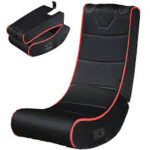Creating the perfect office environment is more than just selecting a few desks and chairs and calling it a day. In today’s evolving workplace culture, where employee well-being and productivity are paramount, designing an office space that strikes a balance between comfort and aesthetics is no longer a luxury—it’s a necessity. A well-designed office that looks good and feels even better to work in has become an essential factor in employee satisfaction, company branding, and day-to-day functionality.
When an office looks polished and inviting, it naturally promotes a professional image, impressing clients and motivating employees. But when comfort is neglected in pursuit of aesthetics, the space can become visually pleasing yet practically unusable. On the other hand, a highly functional office with zero attention to design can feel uninspiring and drab. So, how do you achieve the ideal balance? It all begins with understanding the purpose of your space, the people who use it, and the message your brand wants to convey.
Designing With Purpose and People in Mind
The foundation of a comfortable and aesthetically pleasing office lies in knowing who you’re designing for. Think beyond generic design trends and evaluate the specific needs of your team. Are your employees mostly seated for long hours? Do they frequently collaborate in groups or work independently? Understanding work styles and behaviors is crucial in selecting the right furniture, layout, and materials.
Your office design should serve the workflow rather than hinder it. An open layout may look modern and trendy, but if your employees need quiet focus zones, you’ll need to integrate soundproof pods or private meeting rooms. Every design choice must consider how people function within the space. The more your design supports their comfort, the better they will perform. And the more beautiful the space, the more inspired they will feel.
Ergonomics: The Foundation of Comfort
No matter how attractive a piece of furniture looks, it’s useless if it causes discomfort or injury. Ergonomics should always be at the forefront of your office design strategy. This means selecting chairs that support proper posture, desks that are at the right height, and accessories like footrests and monitor risers that help reduce physical strain.
An ergonomic chair, for example, should support the spine, offer adjustable height and lumbar support, and provide a seat cushion that reduces pressure. Desks should accommodate the employee’s working style, whether that means a standing desk option or a spacious surface for dual monitors. Investing in ergonomically designed pieces is one of the most direct ways to promote employee health, which in turn reduces absenteeism and increases job satisfaction.
Aesthetic Choices That Reflect Brand Identity
While comfort should never be compromised, aesthetics play an essential role in brand representation. A visually cohesive space tells a story about your company’s values, culture, and professionalism. From color schemes to material choices, your aesthetic decisions should align with your brand message.
For example, a tech startup might prefer a minimalist, industrial look with exposed ceilings and neutral tones, while a creative agency might lean into bold colors, unique furniture pieces, and playful wall art. Each design element, whether it’s a light fixture or a rug, contributes to the mood and energy of the space. Thoughtful design enhances visual appeal and creates an environment that employees are proud to be part of.
Incorporating Nature and Light
Natural elements not only enhance the aesthetics of an office but also improve comfort and well-being. Introducing biophilic design—design that connects people with nature—can greatly increase employee satisfaction. Think large windows that let in sunlight, indoor plants that purify the air, and natural materials like wood and stone that bring a touch of the outdoors inside.
Lighting is another major factor in balancing comfort with aesthetics. While overhead fluorescent lights may be functional, they can cause eye strain and negatively affect mood. Consider layering different types of lighting—ambient, task, and accent—to create a more inviting and practical workspace. Natural light, in particular, boosts productivity and helps regulate sleep patterns, which is critical for employees spending eight or more hours in an office.
Quality Furniture That Marries Form and Function
Choosing the right office furniture is where comfort and aesthetics truly meet. Thankfully, the market now offers a wide range of designs that are both functional and visually appealing. Look for furniture that complements your overall design theme but also meets the practical needs of the users.
If you’re sourcing office furniture Karachi suppliers can offer a diverse mix of locally made and imported options that strike this perfect balance. Whether you’re setting up a corporate space in the heart of the city or designing a creative studio in a quieter district, local vendors provide plenty of opportunities to find pieces that suit your taste, space constraints, and ergonomic requirements. Customization is also more accessible when you work with local providers, allowing you to create unique solutions that align with your brand and comfort goals.
Smart Layouts That Encourage Movement
A beautiful office with a poor layout quickly becomes an obstacle to productivity. Comfort isn’t just about physical seating; it’s also about how people navigate and experience the space. A smart layout encourages movement, provides easy access to shared resources, and fosters both collaboration and privacy where needed.
Consider using zoning techniques to define different areas for different activities—quiet zones for focused work, open lounges for informal meetings, and designated collaborative spaces with whiteboards and flexible seating. These zones help employees feel more in control of their environment and give them the freedom to choose where and how they work best.
Flexibility for Future Growth
A truly balanced office space anticipates change. As teams grow and technology evolves, the office should be able to adapt. Modular furniture, movable partitions, and adjustable desks all contribute to a flexible environment that remains comfortable and visually harmonious over time.
Investing in timeless, durable design elements allows your office to maintain its appeal even as trends change. Rather than redesigning your office every few years, you can simply reconfigure the layout or update accents to keep the space feeling fresh without sacrificing comfort or breaking your budget.
The Emotional Impact of Design
Comfort and aesthetics do more than affect physical well-being—they also shape emotional responses. A well-lit, tastefully decorated office can reduce stress, elevate mood, and even boost creativity. Employees who feel good in their surroundings are more likely to enjoy their work and remain loyal to the company.
Think about the emotions your office should evoke. Should it feel calm and focused? Energetic and lively? Sophisticated and professional? Once you define the emotional tone, you can make design choices that reinforce that feeling—through color, texture, layout, and furnishings.
Conclusion: The Harmonious Workspace
Balancing comfort and aesthetics in office spaces is an ongoing process, not a one-time project. It requires thoughtful planning, an understanding of human needs, and a commitment to both beauty and usability. When done right, your office becomes more than just a place to work—it becomes a space where people thrive.
By investing in ergonomic design, choosing furniture that suits both your brand and your employees, and crafting a layout that promotes productivity, you create an environment where aesthetics serve a functional purpose. For companies sourcing office furniture in Karachi or anywhere else, the goal should always be to create spaces that are as pleasant to experience as they are to look at.


